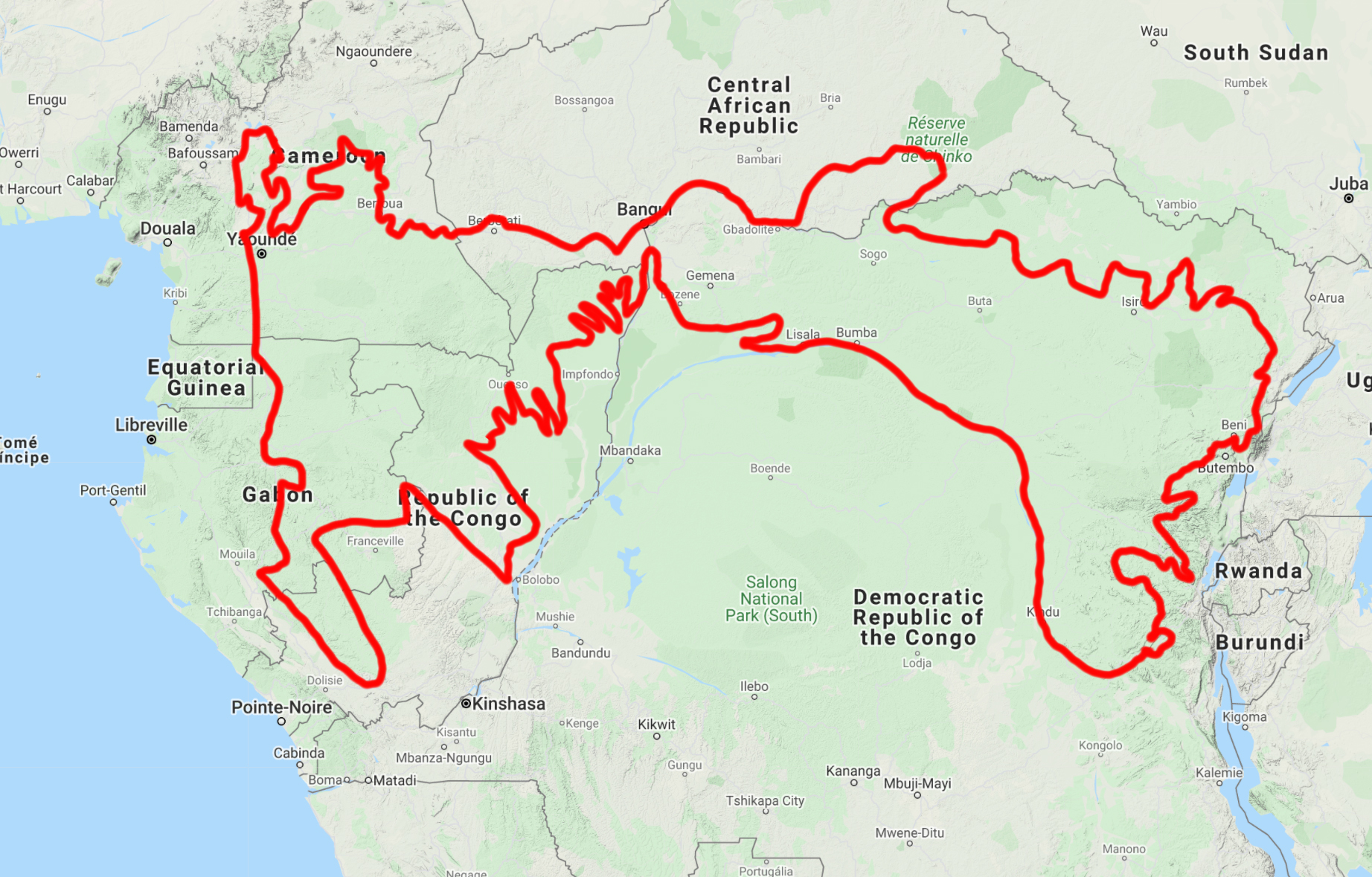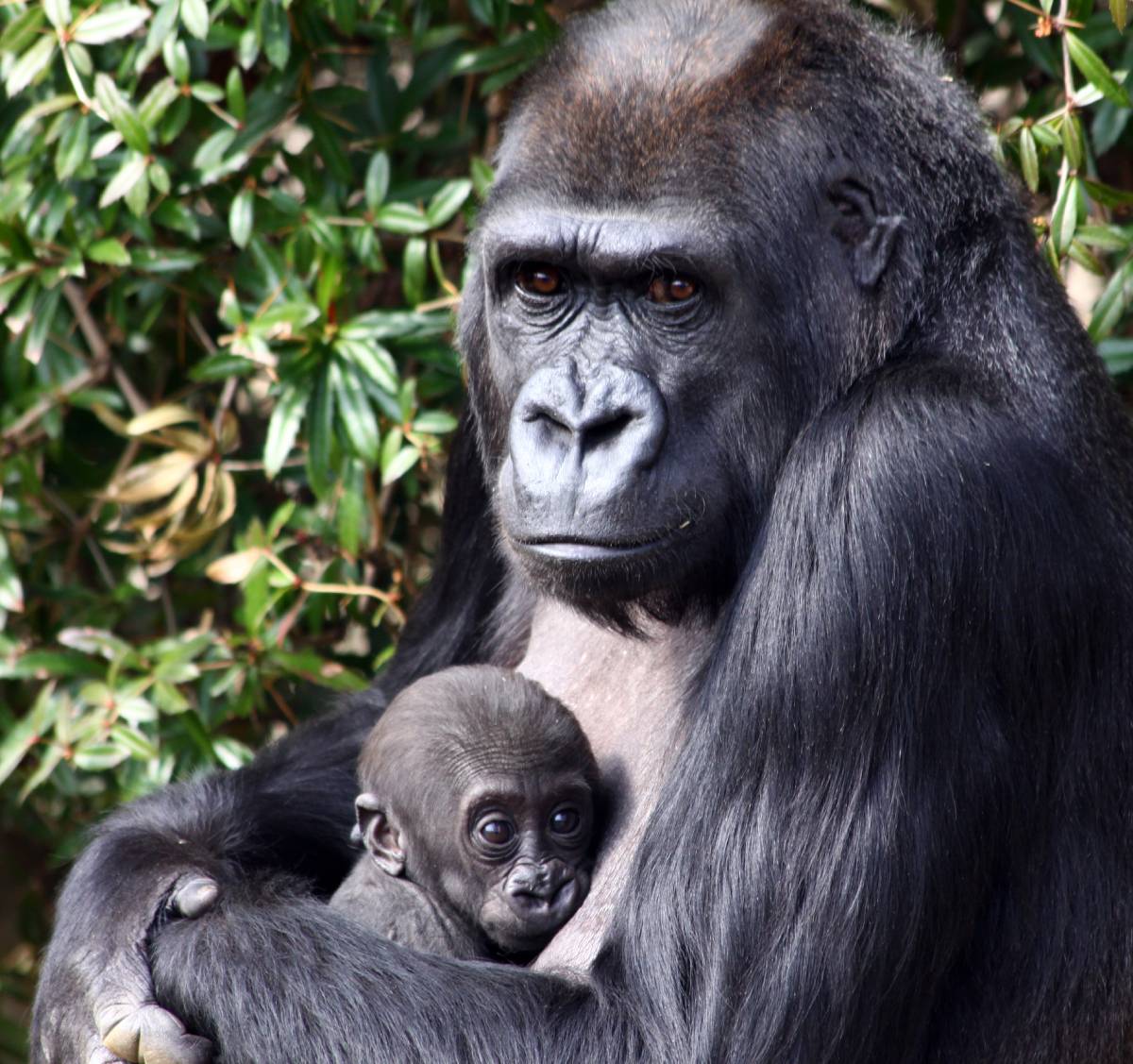How the western lowland gorilla functions as an umbrella species
- Nature Conservation
- Land Conservation
- Iconic Species
- Forests
- Wildlife
- Mammals
- Biodiversity
- Equatorial Afrotropics
- Afrotropics Realm
One Earth’s “Species of the Week” series highlights an iconic species that represents the unique biogeography of each of the 185 bioregions of the Earth.
Stretching along the western coast of Africa, across the countries of Cameroon, Central African Republic, Republic of Congo, and Gabon, is a vast rainforest full of lush vegetation and biodiversity. It is one of the world’s last remaining tropical forests home to the largest population of lowland gorillas. The smallest of the four gorilla species, western lowland gorillas are the most numerous and widespread. Although their exact numbers are not known due to living in some of the densest jungles, their impact on this region is felt worldwide. An “umbrella species,” western lowland gorillas indirectly protect many other species that make up the ecological community of their habitat, and in doing so, aid in the health of our planet’s atmosphere.

The western lowland gorillas is the Iconic Species of the North Congolian Lowland Forests bioregion (AT15).
Standing erect, male western lowland gorillas can measure as tall as 1.8 m (5 ft 11 in) and weigh up to 270 kg (600 lb.) As they get older, the jet black hair that covers their entire body except for the face, ears, hands, and feet turns grey, giving them their nickname of "silverbacks.” Females have the species’ distinct prominent brow ridge, large nostrils, and expressive eyes but are quite smaller, weighing only a maximum of 90 kg (200 lb.) Western lowland gorillas are known for their impressive strength, estimated to be about 10 times their body weight. Fully grown silverbacks can lift 1,810 kg (4,000 lb.), while in comparison, the current world record for the bench press is 501 kg (1,105 lb.)

Western lowland gorilla holding her newborn baby.
Primarily herbivores, western lowland gorillas eat roots, shoots, fruit, wild celery, and tree bark with the occasional insect. Adults eat around 18 kg (40 lb.) of food per day, climb trees up to 15 meters high, and never completely strip the vegetation from a single plant. This pruning and a massive amount of consumption make them so imperative to this ecosystem. The forest in the Congo basin function as the “lungs of the planet,” cleaning the air of carbon dioxide and replacing it with clean oxygen. Gorillas help keep these lungs healthy by shaping plant communities within the forest, letting in light, and dispersing seeds.
Humans share 98% of their DNA with gorillas. This is most apparent in their ability to communicate and use tools. Researchers in the field have studied the language of gorillas and have been able to communicate with over 22 distinct hoots, barks, grunts, and coos, while many gorillas have been known to learn sign language. As seen in chimpanzees, western lowland gorillas also strip branches of excess and use them to extract ants and other insects from holes. This showcases the gorillas' high-level sensorimotor intelligence which is similar to that of young human children.
Western lowland gorillas are critically endangered. Deforestation and poaching have caused populations to decline by more than 60 percent over the last two decades. Many efforts have been made to help protect this species, as well as Cross River gorillas, Grauer’s gorillas, and mountain gorillas. Being named one of the New Big 5 of wildlife photography, a swell in crowdfunded philanthropy, and community-based conservation of Grauer's gorillas have helped spread awareness and encourage protection of these majestic great apes.
Explore Earth's Biodiversity


